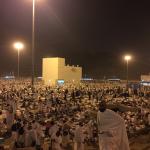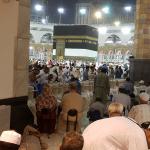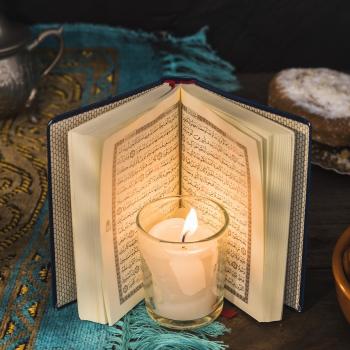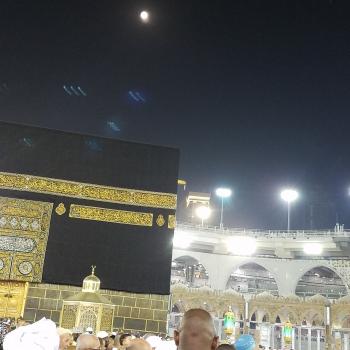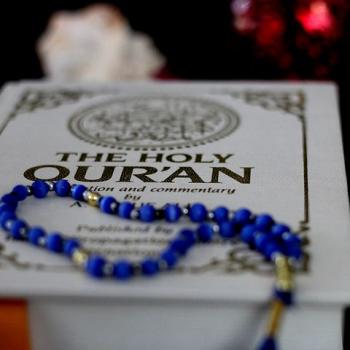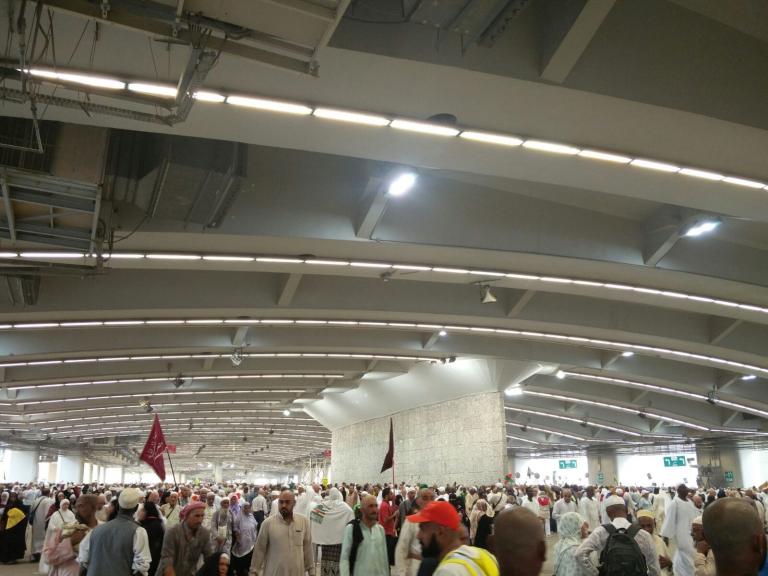 After spending a night at Muzdalifah, we headed to Mina for a very important ritual of the Hajj called Ramee Al Jamaraat. It was another reminder that many of the rituals of Hajj are to commemorate and honor Abraham and his family. Ramee is an integral part of Hajj, when the pilgrims throw pebbles at three pillars, marking the spots where Satan met Abraham three times to deceive him.
After spending a night at Muzdalifah, we headed to Mina for a very important ritual of the Hajj called Ramee Al Jamaraat. It was another reminder that many of the rituals of Hajj are to commemorate and honor Abraham and his family. Ramee is an integral part of Hajj, when the pilgrims throw pebbles at three pillars, marking the spots where Satan met Abraham three times to deceive him.
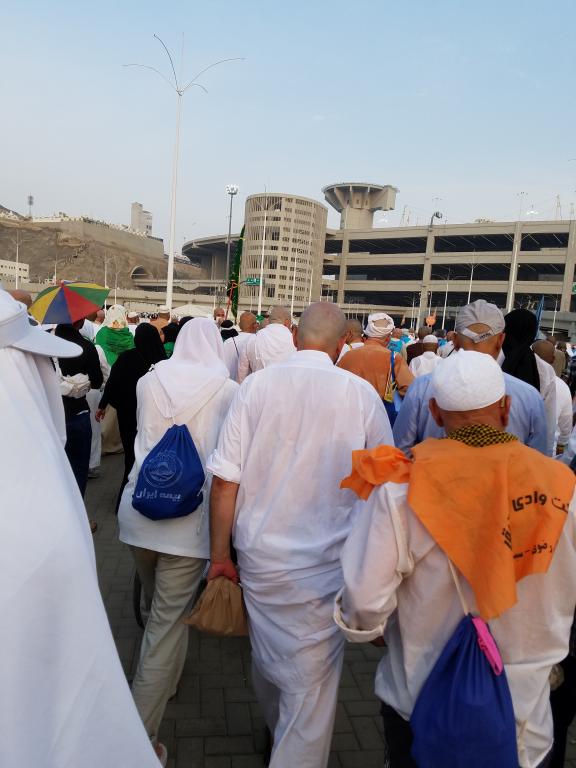
We stayed in Mina for 3 nights among the sea of tents, made specifically for the purpose of housing the pilgrims during this part of Hajj. On day 1, we walked several miles from Muzdalifah directly to Jamaraat (the place where the pebble throwing occurs) to cast the pebbles we collected in Muzdalifah. There are three pillars marking three spots where Abraham was met by Satan to prevent him from following the command of God to sacrifice his son, Ishmael. The Muslim narrative is different in that it was Ishmael, not Isaac who Abraham was asked to sacrifice. Each pilgrim throws 7 pebbles to each of the three pillars. On Day 1, only the big Satan is to be hit. On the next two days, each of the three pillars are hit 7 times. So we threw 49 stones in all during Ramee over three days.
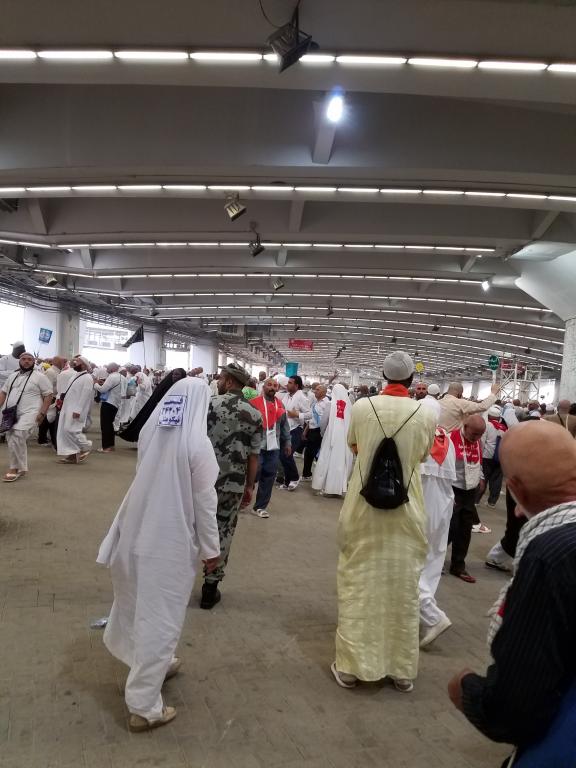
Stoning the Devil is of course symbolic. The physical aspects are important but more importantly, it is the inner devil in us that we are casting off. We are getting rid of the temptations, ego and evil thoughts. In doing so, we are promising to purify ourselves from the impurities that had penetrated us, often without us realizing it.
After casting our stones, we walked back to our tents. Like Arafat, each tent housed up to 100 pilgrims. Our tent was smaller and we had about 60 pilgrims. But it was still overcrowded because of a mix up in scheduling. We were supposed to have the entire tent to us but another group got placed with us. On top of it, one of the three air conditioner in the tent was not working, and as the luck would have it, it was the one nearest me! The other group did leave on the second day for another tent, much to the relief of our group, not that we didn’t like them, but it was over crowded even from the norms of the pilgrimage. the first day of ramee on the 10th of Dhul Hijja marks the festival called Eid al Adha. Muslims around the world celebrate it even if they are not performing hajj, by slaughtering sacrificial animals, typically a goat, sheep or a cow.
Yet another memorable moment:
Soon after our return to the tent came yet another memorable moment for me.
The next set of ritual is to sacrifice a goat or another sacrificial animal- once again to commemorate the sacrifice of Abraham when a Ram had appeared to him and Ishmael. Like most pilgrims nowadays, we did not do the slaughter ourselves and designated someone to do it on our behalf. But that was not the memorable ritual I am talking about.
Men are required to shave their heads after the sacrifice of the animal. To be frank, I was not looking forward to this part of the Hajj. I asked my religious leader if there was a way out. He said no. I asked if I could do a Kuffara instead, meaning if I could “compensate” the ritual with something else such as feeding the hungry, extra sacrificial animals etc. He asked me if I had a medical condition that would prevent me from shaving. I said no. He then informed me I had no way out. I had to shave my head!
So I reluctantly asked one of my fellow pilgrim, a young family friend in the group to do the painful job.
This is when I literally had a revelation. As he was shaving my head, a complete sense of calm took hold of me. I felt so light, so totally peaceful and so fulfilled after he completed the job and the words cannot describe it. I felt like a Hajji.(one who has performed Hajj pilgrim). I would have felt so very incomplete had I not done it.
I remember that very moment to this day. You see, shaving the head is very symbolic- a symbol of our submission to God. It is a sign that we surrendered our ego to the will of God. Shaving head is traditionally considered a sign of ultimate humility, along with prostrating with the head on the ground.
Humbling myself like that before God was an uplifting spiritual experience, which I cherish to this day.
I felt so good that in fact, upon my return from Hajj, I decided to shave my head regularly and permanently. I shave my head every week or two, bringing back some great memory on a regular basis!
Here are the two short videos- the first one shows stoning the Devil, the second was shot on day 2 as we waked towards Jamaraat.


